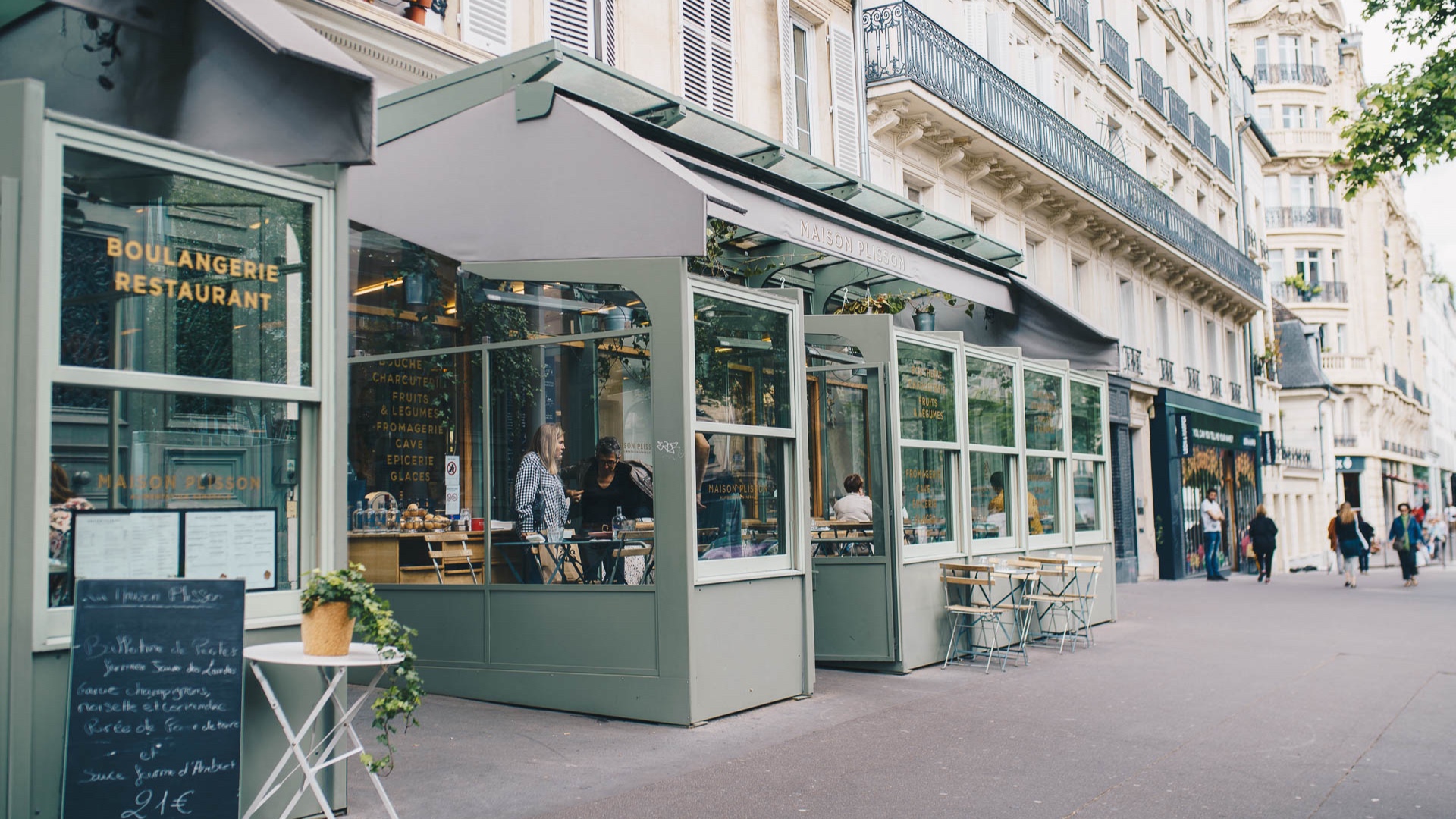Have you ever checked out Black&Wood, the travel blog run by Parisian adventurers Marine and Thibault? If not, you should if you enjoy fun-to-read articles and need some inspiration for future travel destinations. Picking up where we left off, we collaborated with them again for a travel guide to the Basque Country. Here’s what they reported back with after their two week trip!
At the start of the year, we decided to travel by train more often in order to discover unknown regions in France and the bordering countries. That’s where we got the idea to explore the Basque Country… and it turned out to be a real revelation! We did not expect to see that many superb beaches or feel like we were on the other side of the planet in the Pyrenees. Today we can confidently say “you don’t have to go far to travel!”.
Biarritz.
When we first visited Biarritz in August 2014, we were already instantly charmed by the reigning surfer vibe, the big waves and rugged coastline. Since then, we wanted to return for a couple of days in order to see even more.
The city hasn’t changed. It’s still as thriving as ever, with its bars and restaurants in the center of town and the ocean always close by. What we’d forgotten was how hilly Biarritz is and how many old villas there are. Some definitely weren’t afraid of some megalomania when they built their villa that close to the ocean… Like Villa Belza in its peculiar neo-medieval style, erected on the rocky coast in the middle of Biarritz. Any closer to the water would have been impossible!
To discover Biarritz, it’s ideal to take a walk from the lighthouse towards Milady Beach. That way you pass along La Grande Plage, the small harbor, the Rocher de la Vièrge Marie, the magnificent Port-Vieux beach and you can even push through all the way to IIbarritz, a beach and reef break very popular among surfers.
For those that like it sweet, we’d recommend trying the Basque pie with black cherries at Maison Adam, it’s out of this world!
The French Basque backcountry.
During our first stay years ago, we didn’t have the time to venture into the mountains of the Basque Country. A shame really because it really is a different facet of the region well worth discovering. Even if we weren’t particularly charmed by the villages Espelette (very touristy!) and Ainhoa in the hinterland, we did love trekking through the area.
The hike that leads up to the Holzarte bridge - over the canyons with the same name – is mythical here and we understand why. The bridge is suspended more than 200 meters high in the middle of lush vegetation. Best if you’re not afraid of heights!
We also hiked beyond the Basque Country, in Béarn to be precise, on the trail that goes to Lac Ayou. It’s considered to be one of the most beautiful hikes one can do in the Pyrenees. We’d also recommend to bivouac at the foot of Lac Gentau, so you can take in the incredible light on the impressive Pic d’Ossau at sunset and sunrise.
The coastal trail.
Hiking is also possible on the coast! We’d like to emphasize that we’re not exactly experienced hikers, but we do enjoy walking as a way to take the time to observe and access remote locations.
There’s a rather well-known coastal hike that goes from Bidart to San Sebastian. We did part of it, from Saint-Jean-de-Luz to Hendaye, which is about 18 kilometers. Along the way we saw plenty of coves with grooved rocks, beautiful.
Arriving in Hendaye, the trail is often just on the side of the road, which is a pity, but erosion swallowed up parts of the old trail. That’s why in the whole region it’s advised to not walk too close to the cliffs.
We also hiked up the coastal trail behind Fontarrabie in the direction of San Sebastian. In that part of the area the trail is much wilder and far from any traffic and it passes by a ton of beautiful creeks.
San Sebastian.
Without a doubt, San Sebastian was one of the nicest discoveries of our trip though the Basque Country. We loved the contrast between the yellow-ish sand, the blue of the ocean and the lush green that surrounds. The city’s character is defined by its two majestic hills, the Igeldo and the Urgull. If you would’ve told us we were in Rio de Janeiro, we would’ve believed you!
A funicular will get you to the mini-amusement park that was built in 1911 on top of Mount Igeldo. The view up there, overseeing the Concha Bay is very much worth the detour. We went there for the panorama but have to say we were positively surprised by the vintage theme park where you can go on a canoe tour, get on a rollercoaster or even a ghost train.
San Sebastian obviously also is a very lively and festive city, with its many pintxos bars and its proximity to the immense Concha beach and the small Santa Clara island. Like in Biarritz, we recommend that you discover the city by walking along the shore, from the harbor all the way to Zurriola beach, which is another surfer favorite.
Last thing before you leave town: don’t forget to visit the Bellerose store!
Bilbao.
Bilbao, another wonderful discovery! For a long time, the city suffered from its industrial past and didn’t manage to renew itself. A beautiful remnant from that era is the incredible Vizcaya Bridge (Puente de Vizacaya if you’re local) from the end of the 19th century, classified as a World Heritage Site by UNESCO. It was the installation of the famous Guggenheim museum that turned things around for Bilbao: a new, modern architecture emerged and as a result, a better image and more visitors to see what is going on.
The city is a very pleasant stop these days, with a well-developed cultural offer thanks to the Guggenheim and the Azkuna Zentroa (the contemporary culture center). After having visited plenty of different Spanish cities, we’ve got to say that Bilbao has more in common with certain Anglo-Saxon places, due to its architecture, its parks and ambiance. Plenty of fine restaurants and bars too. If you’re vegan or vegetarian (or in for something different), we recommend La Camelia Vegan Bar which offers vegan pintxos with a Japanese touch! We were excited because we’d been looking for a vegan alternative for these since the start of our trip.
As nice as Bilbao is, its surroundings are even better. We suggest that you take one of the trails in the Urdaibai Biosphere Reserve, to finally end up on Laga beach. You’ll come across fir trees, mountains and beaches with the finest sand! Not far off you’ll also find the mythical San Gaztelugatxe, symbol of Basque Country. In hindsight, it seems impossible to build a church on a small island, only accessible by a staircase of 241 steps and a bridge. A truly grandiose place, we understand why some Game Of Thrones scenes were filmed here.
Bardenas Reales.
If you have the time, the Bardenas Reales Natural Park in the desert is certainly worth a visit too. Often compared to the well-known parks on the American West Coast, we’d advise to come here before you fly over to the States. That way, you won’t be disappointed.
We’d also advise you to prepare your trip well, because the Bardenas Reales park isn’t all that obvious to visit. The easiest way to go about it is taking the carriage track that runs through it, it’ll give you a nice overview of the different landscapes. You’ll also pass the fairy chimney, the park’s most known landmark.
The northern part of the park is only open from mid-October to late February and - of course - it appears to be the most beautiful part. So, it’s best to go during fall or winter.
Going further.
We strongly advise you to go beyond the borders of the Basque Country. The Cantabria region for example has marvelous beaches. Arnia beach is one of the most beautiful we’ve ever seen. Santander, the capital of Cantabria, is another super pleasant city, surrounded by beaches on its beautiful shores. A sight to behold!
Upon our next visit to Spain, we’re planning on exploring this region further, along with Galicia because, why not?
Getting there.
The Basque Country is easily reachable by train. Every town has its little train station. There’s a high-speed TGV connection from Paris to Hendaye, with a stop in Biarritz and Saint-Jean-de-Luz. From the Hendaye train station, you can take a direct train into Spain.
If you prefer flying, look for flights to Biarritz, San Sebastian and Bilbao.
Getting around.
The train- and bus network is well developed in the whole of the Basque Country, in France as well as Spain. Of course, you can also rent a car.
How long?
If you want to enjoy the beaches and the mountains, we’d recommend staying for two weeks at least so you can properly explore both the French and the Spanish side.
When to go.
The Basque Country is known to be kind of rainy. Even in the summer! Obviously, the months of July & August are the busiest. Your best move would be coming in June or September, the weather is less humid then too.
Pictures & text by Marine Etoubleau and Thibault Pailloux
from Black&Wood.









































